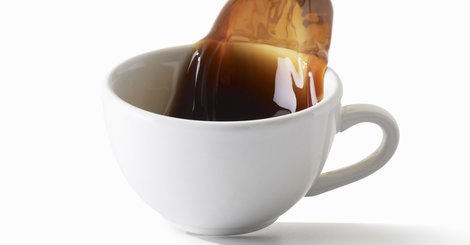
Glow Cuisine via Getty Images
Did you hear that? The faint, sweet sound of children laughing? This may be because researchers may have found a way to make chocolate more nutritious and taste even better that it currently does.
Chocolate is already revered as a healthy power player: Some kinds have been shown to lower risk for stroke, boost mood and potentially serve as brain food, helping people to feel more awake and focused. Plus, its special well of antioxidants may help improve memory.
To further amplify chocolate’s street cred, Emmanuel Ohene Afoakwa, Ph.D., who is at the University of Ghana, and his team added a step to the process that is used to transform cocoa beans into the chocolate you’d find in a candy store. In chocolate’s conventional procedure, cocoa beans are roasted to form a palatable chocolate product. During the roasting period, the beans lose some of their heart-healthy antioxidants (polyphenols).
Afoakwa and his team stored the cocoa bean pods before their fermenting and roasting process, hoping to retain some of the lost nutrients. To gauge the effect of pod-storage, researchers divided 300 cocoa pods into four groups. The first group of pods underwent the traditional process for making chocolate: The beans are removed from their pods, fermented in a basket for a few days and set out in the sun to dry. They are then roasted.
The three remaining groups of pods were stored — a method called “pulp preconditioning” — for three, seven or 10 days before going through the typical fermentation and drying process. Afoakwa says the group of pods that were stored 10 days contained more antioxidants than any other group after roasting.
The researchers added a second alteration to cocoa’s process: They found that a slower roasting process at a lower temperature (45 minutes at 242 degrees Fahrenheit) resulted in beans with more antioxidant activity than those roasted at a typical temperature and time (10-20 minutes at 248-266 degrees Fahrenheit).
Cocoa beans that were stored for the longest, at 10 days, and roasted at a lower temperature for a longer time contained the most polyphenols and antioxidant activity. “This aided the fermentation processes and enhanced antioxidant capacity of the beans, as well as the flavor,” Afoakwa says. The researcher theorizes that pulp reconditioning probably enabled the sweet pulp that surrounds the beans to enter the pods before the fermentation process.
The news, which, for some, may sound too good to be true, was presented Tuesday March 24, at a meeting of the American Chemical Society. The research project received funding from the Belgian government under the VLIR TEAM Cocoa Project and requires deeper exploration before being marked conclusive, but Afoakwa has high hopes. He foresees the altering of chocolate’s nutritiousness and flavor as beneficial for countries in Southeast Asia and Latin America, where cocoa beans yield less intense tasting chocolate with reduced antioxidant activity.
